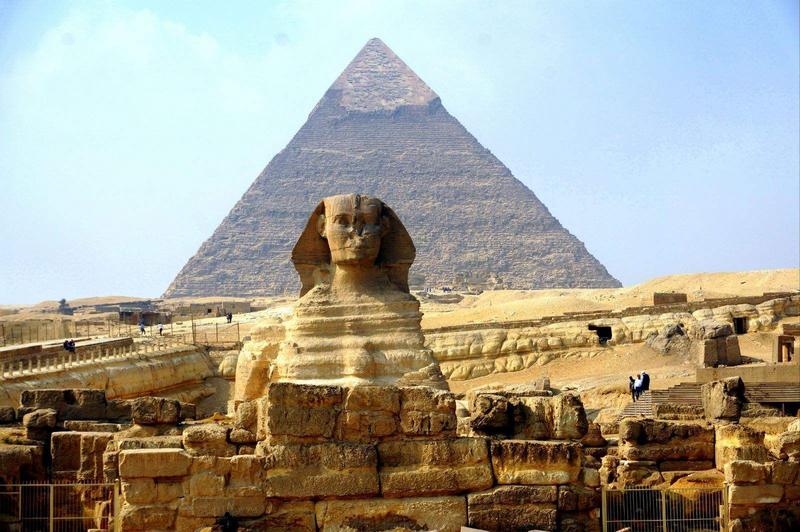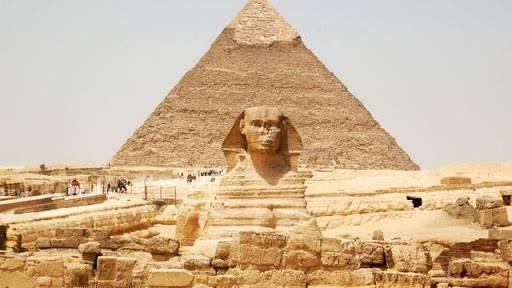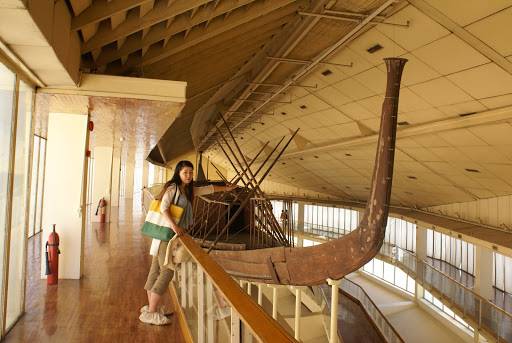The Great Pyramid of Giza is a man-made stone tower, constructed with approximately 2.3 million stones, with an average weight of 2.5 tons each. Overall, it is shaped like a pointed cone, resembling the Chinese character "金" (gold), and is therefore referred to as a pyramid by the Chinese. Currently, only one damaged stone sarcophagus remains in the main burial chamber, which can be seen if you enter. The internal structure of the pyramid is very complex, consisting of three burial chambers connected by multiple passages. The passages are long and narrow, so visitors need to pay attention to safety when entering.
At least five boat pits have been discovered around the Pyramid of Khufu, containing dismantled boat structures. Some believe these boats had religious significance, serving as important tools for the pharaoh's journey to the afterlife, akin to the sun god's cycle of setting in the west and rising in the east, with the pharaoh resurrecting on the boat, hence the name 'Solar Boat.' Others believe these boats were practical vessels used for the funeral of Pharaoh Khufu. The exact purpose remains unverified. The museum displays one of these boats, which has been restored and reassembled. It is 43 meters long and 5.9 meters wide, and was originally found in over 1,000 pieces.
Khafre was the son of Khufu. His pyramid is second in size only to Khufu's, standing at 143 meters tall with a base length of 215 meters. However, its internal structure is relatively simple. The top of the Khafre Pyramid still retains some of its 'casing,' giving an idea of what the pyramid originally looked like. The Khafre Pyramid has also been completely looted, but the burial chamber is open for visitors.
Pyramid of Menkaure
Menkaure was the son of Khafre, and his pyramid is the smallest among the three generations, standing at 65 meters tall with a base length just over 100 meters. The tomb structure is also very simple, but the stone used for the 'casing' (marble) is possibly the best, with remnants still visible at the base. The northern indentation was caused by deliberate damage during the Arab period (around 1196 AD). The burial chamber of the Pyramid of Menkaure is also open for visits.
The mainstream view is that the Great Sphinx of Giza was built during the reign of Pharaoh Khafre and is the first truly colossal statue in ancient Egypt, standing 20 meters tall. The lion's body symbolizes strength, while the human face represents wisdom. The combination of strength and wisdom was the dream pursued by the pharaoh. Due to natural erosion, the Sphinx is in poor condition and has undergone multiple restorations over thousands of years. The earliest record is the 'Dream Stele' between the statue's front paws.













